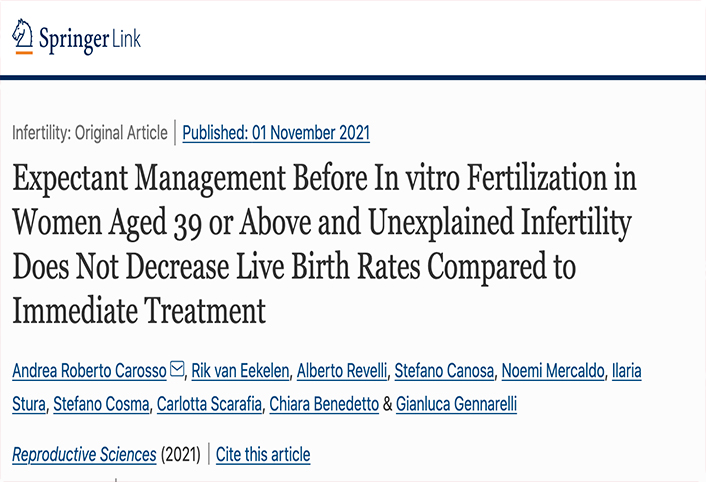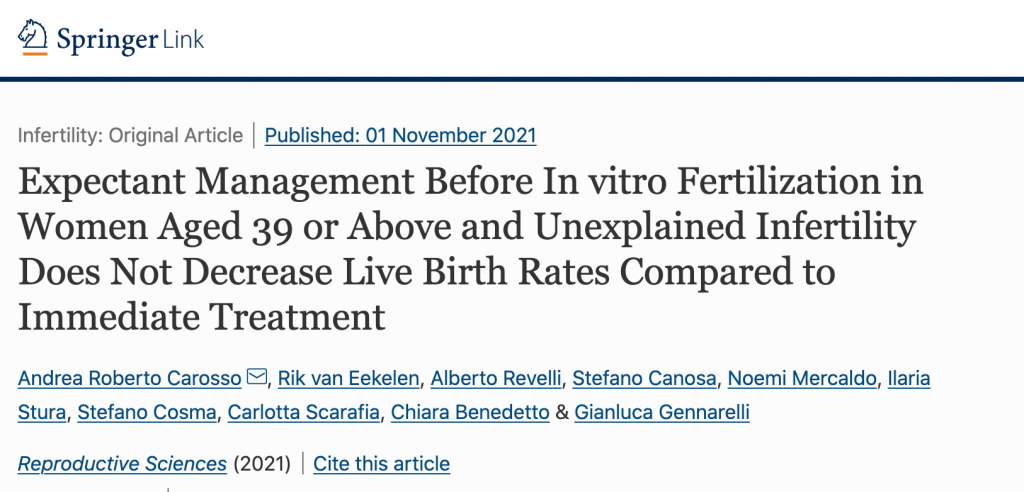
 Expectant Management Before In vitro Fertilization in Women Aged 39 or Above and Unexplained Infertility Does Not Decrease Live Birth Rates Compared to Immediate Treatment
Expectant Management Before In vitro Fertilization in Women Aged 39 or Above and Unexplained Infertility Does Not Decrease Live Birth Rates Compared to Immediate Treatment
Andrea Roberto Carosso, Rik van Eekelen, Alberto Revelli, Stefano Canosa, Noemi Mercaldo, Ilaria Stura, Stefano Cosma, Carlotta Scarafia, Chiara Benedetto, Gianluca Gennarelli
Reprod Sci .2021 Nov 1;1-9. doi: 10.1007/s43032-021-00767-0. Online ahead of print.
Abstract
Unexplained infertile couples can have further expectant management before starting assisted reproductive treatments. However, ovarian reserve and in vitro fertilization (IVF) outcomes rapidly decline after 39 years or more. It is thus important to clarify whether a waiting policy is also appropriate for women of advanced age. Couples who had access to a waiting list for approximately 1 year before receiving reimbursed public IVF were compared with those paying for access to immediate treatment. To allow for comparisons between these two strategies, we followed up couples who opted to pay for 1 year after the last embryo transfer from their first cycle. We calculated the proportion of live births in both groups and compared these using logistic regression models and a two-sample Z test for equality of proportions. Six hundred thirty-five couples were evaluated. Out of 359 couples in the immediate group, 70 (19.5%) had a live birth of which 11 after natural conception and 59 after IVF. Out of 276 couples in the waiting group, 57 (20.7%) had a live birth of which 37 after natural conception and 20 after IVF. There was no statistically significant difference between the two strategies in terms of the crude cumulative live birth rate (cLBR). The adjusted odds ratio of 0.69 (95%CI:0.39-1.22) did not change this conclusion as our sensitivity analyses. The cLBR for the ‘waiting before IVF’ and the ‘immediate’ strategies were similar. Further studies are needed to better characterize couples affected by unexplained infertility in order to individualize treatment strategies.